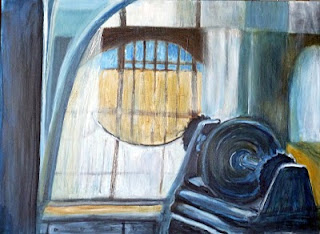Some of those technical skills and tools have already proven helpful in the Shtetlink sites I provide on Radom and Dunilovichi. If you’ve explored those sites you know I am a fan of spreadsheets, often organizing research in spreadsheets and providing them for download. During my time at the conference I attended Dr. Stephen Morse’s workshop on using his “One-Step” tools to create one's own search tools. Basically he has written the HTML code to create a do-it-yourself Soundex search engine to search a database. Steve is a talented computer engineer and entertaining presenter and his tools have become a critical resource for most genealogists. For those of you who did not have the benefit of his session, you can find instructions on how to create a search engine at stevemorse.org under Creating Your Own Search Application. Click on Frequently Asked Questions for a basic tutorial.
You can find some of the ones that I’ve built on the home page of the Radom Shtetlink (see link at side). There you will find one that I built for the 1823 Patronymic Database that I found on my recent trip to Radom. If you click on the Names tab and then the 1823 Patronymic link you will see the original data as I found it in the archives. There are two columns, one listing patronymics (father’s name plus an ending such as Herszkowicz) that Jews went by prior to being required to take last names in 1823. The second column is the last name that they took. In the database I built, I've added a separate column for given name followed by patronymic and surname.
While it was exciting to read my great-great-great grandfather’s entry, trying to do research on a hard copy handwritten listing is not an easy task. Previously I input that information into a spreadsheet that I made available to download and search via filters. Now I provide another way to search via the “One-Step” method.
My 3rd great-grandfather was Berek Herszkowicz prior to taking the last name of Rubinsztajn. That means that his father was Herszk. If he had brothers they should also be listed as Herszkowicz. But Herszkowicz can be spelled a number of different ways. By entering Herszkowicz into the patronymic field and clicking sounds like, it will pull up the various spellings and the last names that those individuals took. It is quite possible at this point in time that adult siblings took different last names. Seven names come up with a father named Herszk, all possible siblings with different names that I may wish to remain aware of in my Radom research.
And a few tips for those who wish to build a search tool...
As a novice, I have found javascript (js-2) to be the easiest starting point to build search tools. You will also want to make use of Notepad to save files in order to remove code that may be input from various programs such as Excel. And finally make sure the names match between the search engine name that you input into the tool and the name you ultimately save the file under. Same goes for the database. Use the "test-drive" button as you build the search to see how it appears to the user. Good luck!










